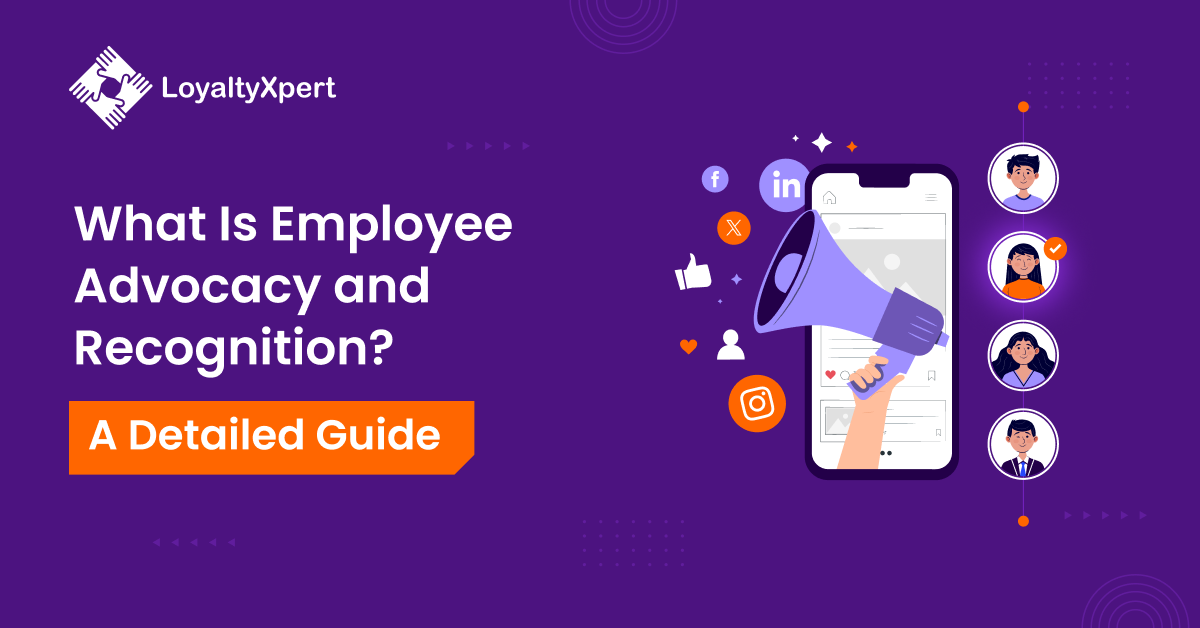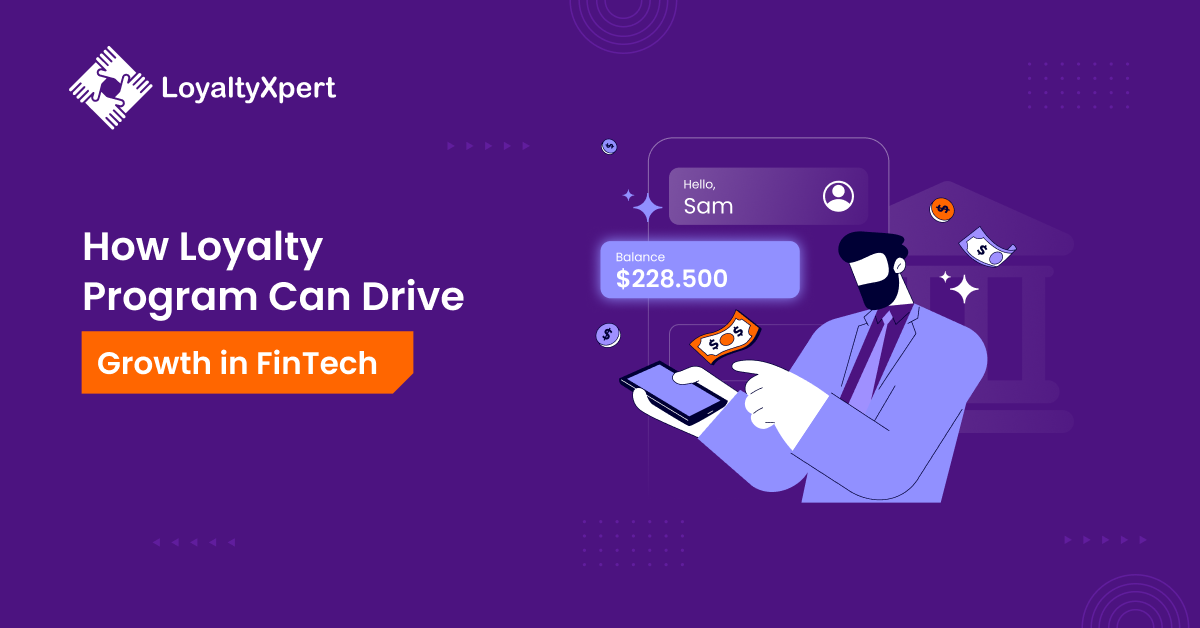
What is Employee Advocacy and Recognition: A Detailed Guide
Author
Maulik Shah
Published on:
Apr 15, 2024
Table of Content
See How Our Loyalty Program Can Help You.
Let us guide you through our product features with Loyalty Experts
Do you know the difference between ordinary and extraordinary? It is all about going that “extra” mile. When a business is performing well, the employees are the ones who bring in that extra. Think in this way- your employees know the company inside and out which gives them the power to project the best of it in the outside world. To accomplish this, your organization needs the best employee advocacy program in action.
Tapping into the power of employee advocacy can be a hit game for a company. According to LinkedIn research, on average, employee networks have 10x more connections than a company has followers. So, why not leverage the wider audience of your employees? The same research shows that —the click-through rate (CTR) on a piece of content is 2x higher when shared by an employee versus when shared by the company itself.
Let’s scratch beyond the surface to understand how employee advocacy drives your business and how it is a win-win for both employees and employers.
While for some companies, a brand advocacy program is a side hustle, for many organizations it is the best way to increase brand awareness, attract top talent, retain employees, and generate leads. Let’s break this down by first understanding employee advocacy’s meaning and how it is different from employee recognition.
Difference between Employee Advocacy and Recognition
Employee advocacy
Employee advocacy is a powerful strategy/tool to convert your employees into brand advocates. The best employee advocacy programs empower your employees to share the company’s useful, unique, and quality content with their social network. Here are the best practices to build a program that can empower employees to become brand ambassadors of your company.
Best Practices to Build an Employee Advocacy Program
Set a goal and strategy: Set a goal and some ground rules. Your employees may be happy to be your advocates but sometimes they don’t know what to say and what not to say on social media.
Goals are the primary things to cultivate a successful program.
For example:
- For Marketing: The goals could be to increase brand awareness and reach new markets.
- For sales: The goals could be to nurture prospects and lead generation.
- For talent: The goals could be to retain and attract new employees.
Segment your target audience: Your employees would have a diverse network. Some could have HR professionals and some could have technology professionals. So, here you need to bring segmentation into action to make your program effective. Design your program in such a way that it motivates different employees to share different information about the company.
For example, the HR department can share their experience and the IT department can talk about the services/products.
Educate employees about value addition: Regular posting and reviews are beneficial for individual social profiles too. It gives employees a chance to expand their network and learn more things. This can amp up their profiles and position themselves as a leader.
Bring gamification into your strategy: Employee engagement can drastically improve by using gamified employee recognition programs/practices. These gamified practices invoke excitement in employees which leads to better engagement.
Read more on the Gamification in Loyalty Program.
Measure the program: Measuring the success of a program is important to incentivize your employees. A LoyaltyXpert digital platform can make your tasks easy by measuring employees’ activities and tracking engagement.
Keep the momentum by rewarding them: Employee recognition and employee engagement are important in running the program effectively. To keep up the momentum, companies need to incorporate rewards and recognition best practices. Using the unique features of a tech-enabled platform, you can identify employees who are actively promoting the company’s products, services, and culture.
Employee Recognition
Employee recognition is an effective practice to appreciate employees for their contributions and hard work. Organizations implement best practices in employee rewards and recognition to retain employees, attract new talent, and motivate them to achieve higher goals.
Best Practices for Employee Recognition
Best employee recognition programs are the ones that create a sense of connection with your employees. Here are some of the best practices for effective employee recognition.
Invest in the right technology: Investing in technologies such as an employee recognition platform can help you foster employee engagement and loyalty. It allows you to plan, execute, and track employee recognition programs. A robust platform can help you build a program that touches every aspect of employees’ contribution to the organization. It also provides you with a holistic view of employee contribution and ensures they are fairly rewarded and recognized for the same.
Recognition and Appreciation: Employees are the assets and they deserve appreciation. An employee recognition program can help you identify employees’ efforts and hard work. Companies can motivate them with social, monetary, and peer-to-peer recognition.
Incentivize: Drive the productivity and efficiency of your employees by incentivizing them with unique rewards. Add fun rewards like free tickets to concerts, passes to their comedian, travel packages, reward points, gift cards, and more.
Now that we are clear with both terms, let’s deepen our understanding of the benefits of employee advocacy.
Benefits of employee advocacy
For marketing: Do you know if 3% of your employees share the company’s content then those shares are responsible for driving 30% engagement? Isn’t it huge for a company to not leverage employees’ networks and market services/products? It surely is. Advocacy programs encourage employees to spread a positive brand image which can become the simplest and best way to authentically engage with wider audiences. Infosys is one of the best examples that leverage employee advocacy. The employees share their expertise, company culture, and knowledge using hashtags such as #InfyDiaries, #IAmFutureReady, #ESGIsAnOpportunity,#DigitalSkilling, etc.
For sales: In today’s world, traditional ways of improving sales are not effective. Employee programs help you think out of the box to improve your sales. About 72% of engaged social media users and 62% of casual users say sharing company posts helps their social selling efforts. The reason is that prospects trust people’s views more than company selling efforts. Employee advocacy humanizes your brand. Don’t you feel confident about your purchase if you read reviews of your friends or family? The same tactic can be used by organizations. Motivate employees to post reviews and share company posts to build trust. It eventually increases sales.
For Talent: Don’t miss out on the opportunity to attract prospective talents that are hidden in your employees’ network. Employee advocacy is a powerful tool to attract new talent to your organization. According to ET, the prospects are more likely to consider an organization that is recommended by an employee. This implies that prospects are likely to have first-hand experience with the company and its work culture. Empower employees to share their experiences with prospects.
A Word to Remember: “Your employee engagement depends on how engaging and benefiting your employee advocacy program is.”
In a nutshell
Brand advocacy is a strategy that works for all business sizes, you just need to leverage its power with an impactful tech platform. LoyaltyXpert has helped companies retain, engage, and attract employees with its powerful tech-backed loyalty platform. The exclusively curated programs according to business goals have made it easy for companies to convert employees into ambassadors.
Employees can make or break a business’s success. They are the ones who add to culture and go above and beyond to achieve business goals. It becomes crucial for companies to admire and appreciate their assets. By implementing employee-oriented programs, companies can create a base of a long-lasting and strong organization. Convert your employees into brand ambassadors using a powerful platform.
Grow strong with your employees and improve sales, employee engagement, and satisfaction.
FAQs
Maulik Shah
Our CEO and co-founder, brings a wealth of IT experience to LoyaltyXpert. He has been the driving force behind LoyaltyXpert’s success and has led with a top-notch mix of technology and innovation that matches market expectations. Maulik employs technology to solve real-world challenges and integrates it into sales and marketing.



